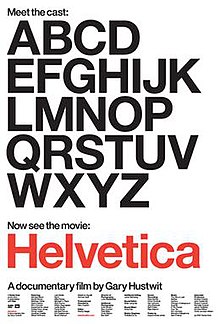Bodoni is a series of serif typefaces designed by
Giambattista Bodoni (1740–1813) in 1798 that today we classify as Modern. Often
remarked as "the father of modern type"1 Bodoni was an
Italian engraver, publisher, printer and typographer of high repute who came
from a printmaking background. The son of a printer, he first served as an
apprentice at the Propaganda Fide printing house in Rome and was later hired by
the Duke Ferdinand of Bourbon-Parma where he achieved an unprecedented level of
technical refinement due to his meticulous design and print quality. Eventually
his success from printing many important works led him to open his own printing
house in 1791, Officina Bodoni2.
During his early career Bodoni first orientated himself
towards the fonts of Pierre Fournier but soon developed his own original
typefaces. Bodoni abandoned the forerunning Old Style typefaces and drew
influence from the high stroke contrast which marked the types of John
Baskerville, for whom he showed great admiration for. Bodoni however, took the
design to a more extreme, clinical conclusion as he believed that well-designed
type derived its beauty from four principles: uniformity of design, sharpness
and neatness, good taste, and charm3.
Bodoni’s original typeface, along with many of its later interpretations, is a romantic font that is easily identifiable by thin, hairline strokes that contrast sharply with bold stems. Additional defining qualities include crisp vertical stress and un-bracketed serifs although some letters possess soft bracketing such as the uppercase letters R and S. The result is a typeface celebrating simplified, geometric shapes with a classic and refined demeanour. His plain and unadorned aesthetic attracted many admirers and imitators and ultimately gained worldwide acceptance among printers.
Due to the thin, peculiar qualities of its letters, Bodoni is
not an easy typeface to use. Its extreme contrast coupled with the strong vertical
stress is not suited for body copy text as the vertical nature of the letters impedes
with the horizontal flow of reading. Interestingly, William Morris described
Bodoni as “sweltering hideousness” and “the most illegible type that was ever
cut”4 and failed to see any use for it. However that said, it
is advised that for best results and
legibility, Bodoni should be set large enough so that the hairlines are
preserved, ample white space is given and additional leading and generous
margins are provided. Its limited range of functions is confined to headlines,
logos and fashion magazines however, when used well; Bodoni almost always makes
a refined, polish and sophisticated statement.
 | ||
| Top to Bottom: Armani Exchange (Fashion), Calvin Klein (Fashion), Elizabeth Arden (Cosmetics) |
 |
| Bauer Bodoni Black used as CMU's wordmark |
 |
| Bodoni used for titles on calenders |
Today Bodoni exists in many modern interpretations such as Bodoni
Classic, ITC Bodoni™ Filosophia, and Lanston Bodoni. However, whatever the
application or type, Bodoni will always show a radical movement in typography
history and exude elegance, luxury and quality.
References
1 Thomas Christensen, accessed 20 July 2012, <http://www.rightreading.com/typehead/bodoni.htm#history>
2 John Boardley 2008, accessed 21
July 2012, <http://ilovetypography.com/2008/05/30/a-brief-history-of-type-part-4/>
3
Taschen 2012, accessed 18 July
2012, <http://www.taschen.com/pages/en/catalogue/design/all/05059/facts.bodoni_manual_of_typography_manuale_tipografico_1818.htm>
4 The Art and
Craft of Printing 2012, accessed 20 July, <http://ebooks.adelaide.edu.au/m/morris/william/art-and-craft-of-printing/chapter4.html>











